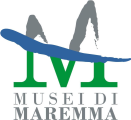Roselle
Roselle was an important ancient town of Etruria, which dominated the territory from Amiata to the Tyrrhenian Coast over a long period of time. The city and its archaeological area occupy the two summits of a hill located a few kilometres north of Grosseto.
Its favourable location was the major reason for the foundation of the village: the natural defences and the presence of a fertile plain near a navigable river, river Ombrone, with an easy access to the great coastal lagoon (The Roman lake of Prile or Prelius, today entirely drained) fostered the economic development of the area with regards to agriculture, craftsmanship and commercial exchanges.
Roselle was also the natural point of connection between the Etruscan inland, the coast and the mineral deposits in the area of Vetulonia.
People, goods and raw materials had to pass through Roselle. The trade enriched the city and boosted its expansion.
Visiting Roselle is like going back in time: the buildings and the excavations are the result of 2,000 years of history, from the Etruscan period to the Middle Ages.
One of the tours of Roselle runs along the Etruscan Walls: this walls were built with huge rocks and part of their structure has been preserved over the centuries, making them the most imposing monument of the city.
The tour leads to the Impluvium House, a massive Etruscan residence with an uncovered atrium and a tank to collect rainwater at its centre, similar to the Roman Domus (house).
On the top of the hill north of the city is the Amphitheatre (I century AD), one of the smallest Roman amphitheatre, used to entertain the citizens with gladiator fights and animal hunts.
The heart of Roselle is the Roman Forum in the central valley.
The Forum contains the most ancient buildings of Roselle, located under a canopy. Among them, the so-called “building with enclosure” (VII century BC), the religious and political centre of the first urban community. The Roman square is surrounded by various buildings, such as the Augusteo, the imperial cult temple of the Augustales, and the Domus dei Mosaici (Mosaics House).
During the Middle Ages the Forum and the surrounding buildings underwent significant changes, which are particularly evident in the area of the Hadrian’s Baths. Between the V and the VI century AD, the rooms of the Baths were used to build the first cathedral and a Christian cemetery, which remained in use until the XII century.
Later on, the inhabitants of Roselle progressively moved to the new city, Grosseto, and only few people remained in Roselle, as witnessed by some finds in the amphitheatre and in the baths: potteries of the Late Middle Ages, modern potteries and devotional medals, which date back to the XVII century.
The finds of Roselle are housed in the Maremma Archaeology and Art Museum in Grosseto.







